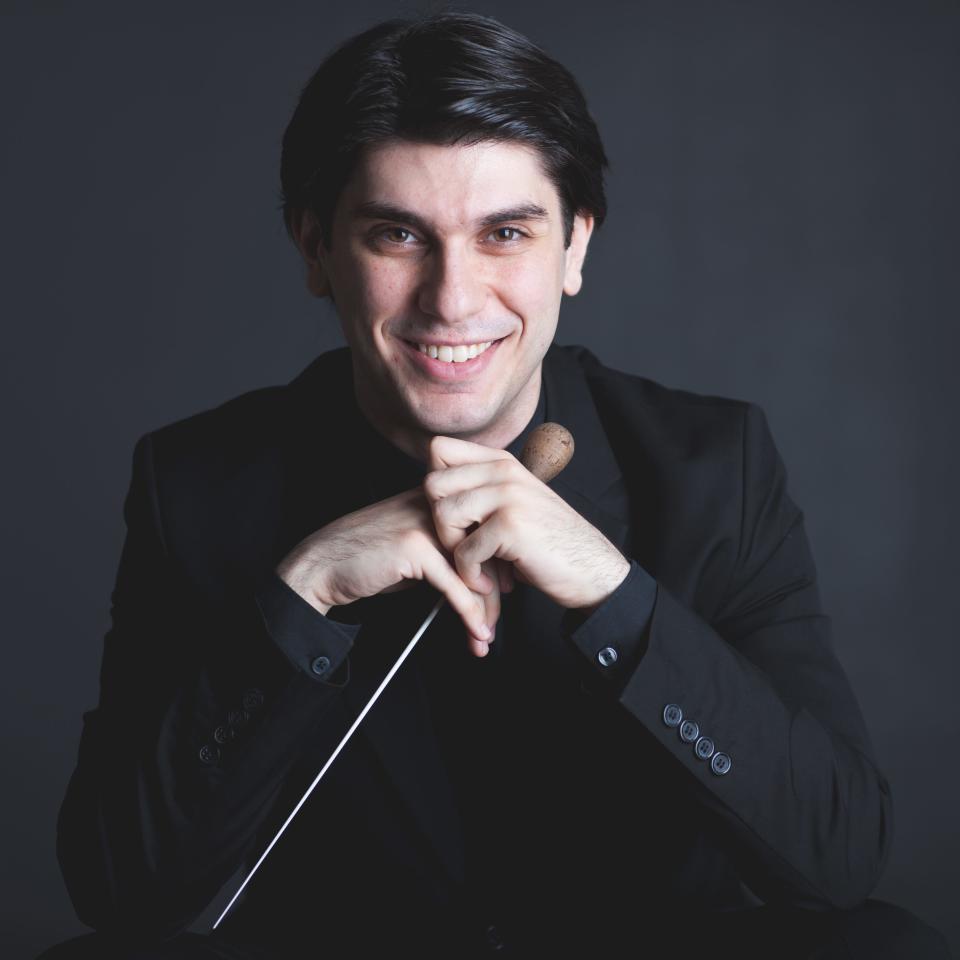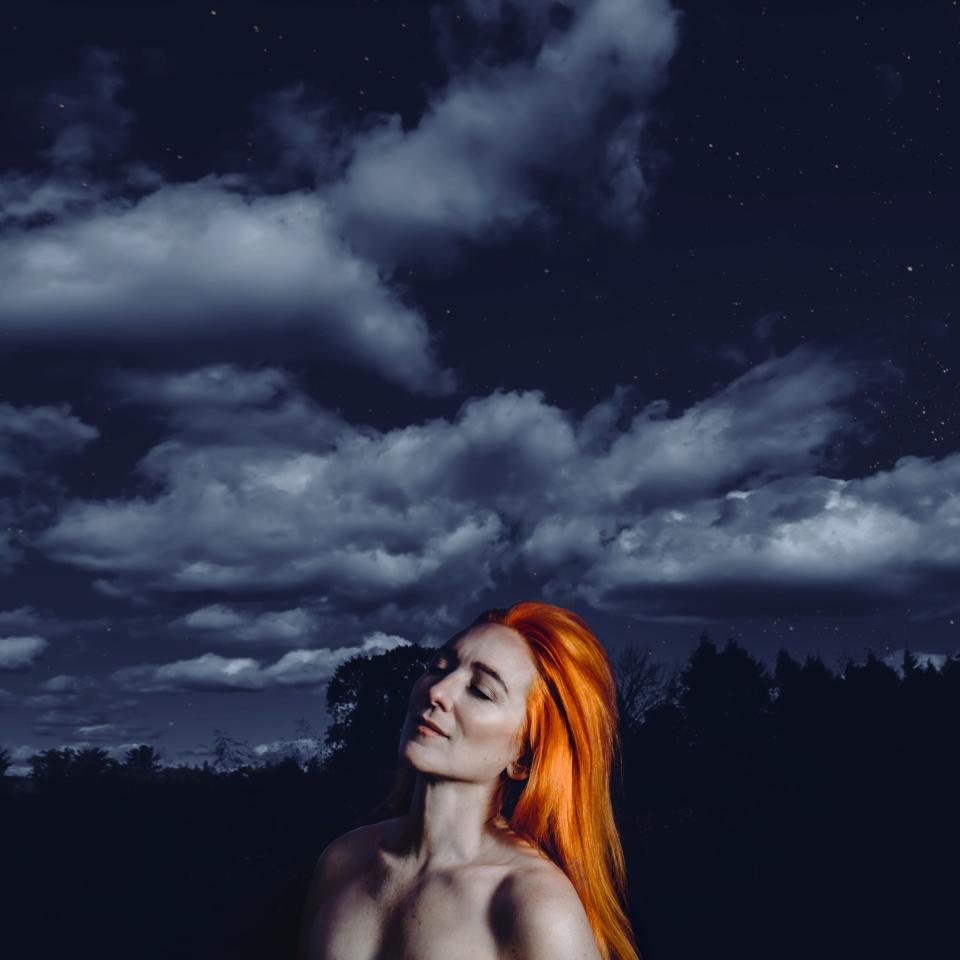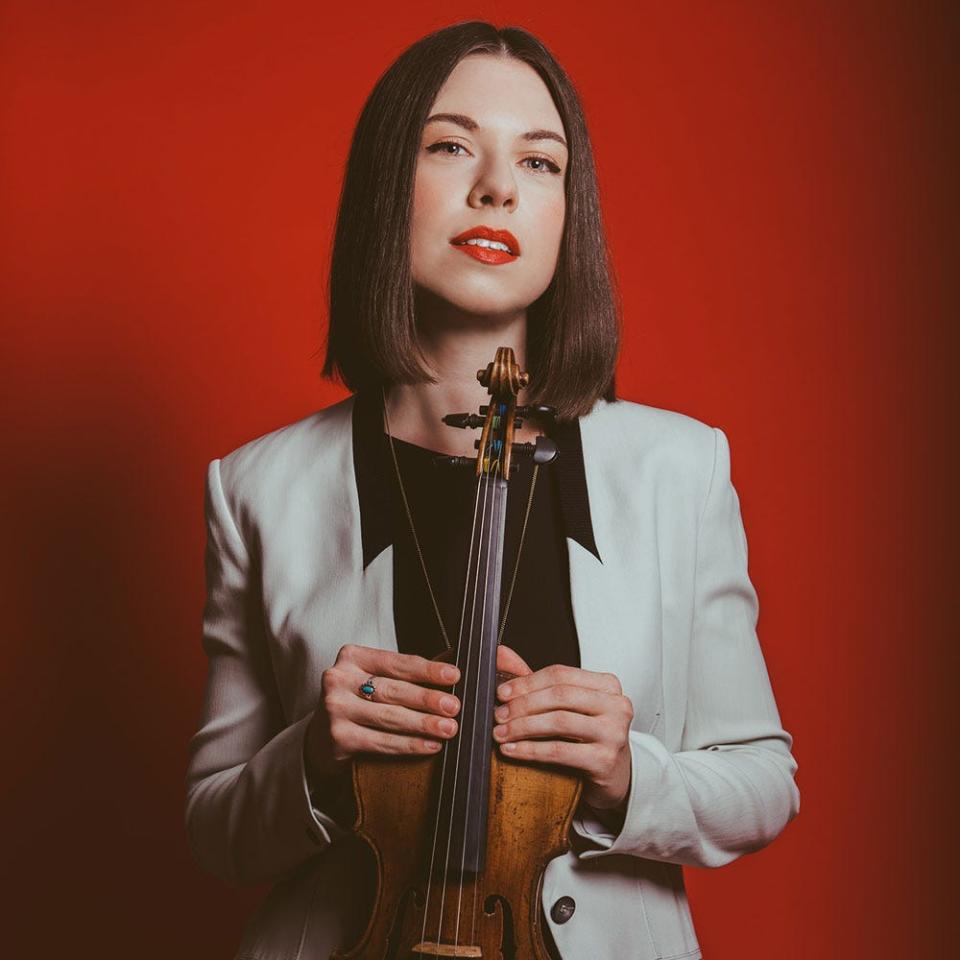The Big Ears Festival and the KSO; 'The Cycle of Life' and 'Blue Hour'
- Oops!Something went wrong.Please try again later.
- Oops!Something went wrong.Please try again later.
- Oops!Something went wrong.Please try again later.
- Oops!Something went wrong.Please try again later.
Bet you never thought of the musicians in the Knoxville Symphony Orchestra as the sort of alt hipster, avant-garde, experimental, super cool artistes that make the Big Ears Festival the envy of the Musical Universe. But they are. And when March turns into April, they’ll prove it. In the process, they will also demonstrate what makes Knoxville so stone cold beautiful.
For Big Ears 2023, the KSO will present two stellar programs of new music. Taken together, they represent a challenge few orchestras would dream of taking on. Just thinking about it makes my head spin, but I’m not a musician.
I’m definitely not an orchestral musician. If I were, I’d be beside myself with the prospect of being part of pulling off what just might prove to be the most talked-about triumph of Big Ears’ 10th anniversary. It’s the kind of achievement that will be called historic. Delightfully musically historic. When the 20th anniversary of Big Ears rolls around, people will cite the 10th as the reason this Festival stays so amazing.
The first program consists of two compositions: the unorthodox, but resoundingly beautiful KSO-commissioned violin concerto, “The Cycle of Life” by Michael Schachter, featuring the incredibly virtuosic violinist Tessa Lark and inspired by glass sculptor Richard Jolley of Oak Ridge, whose installation, also called “The Cycle of Life,” graces the Great Hall at the Knoxville Museum of Art; paired with the deeply mysterious song cycle “Blue Hour,” created by five of the most talented composers in America at the moment, based on a work by one of American letters’ most compelling poets. The composers are Rachel Grimes, Shara Nova, Angélica Negrón, Sarah Kirkland Snider, and Caroline Shaw. The poet is Carolyn Forché, whose soul-shaking exploration of the space-time between life and death, “On Earth,” was published in 2003. Shara Nova will be the sole vocalist for “Blue Hour” with the KSO. The piece was commissioned by the collaborative chamber orchestra from Boston named A Far Cry.
Together, “Cycle of Life” and “Blue Hour” will create something larger than the sum of its parts. And that’s just what conductor Aram Demirjian is shooting for.
The KSO’s second program for Big Ears is a real step into the ether. As imagined and arranged by British composer Michael Gibbs, Maestro Demirjian will recast the orchestra as a member of the Bill Frisell Trio. Frisell is like Soul Brother No. 1 of the jazz guitar. With bassist Thomas Morgan and drummer Rudy Royston, the Frisell Trio performed this Michael Gibbs experiment six months ago with the Brussels Philharmonic Orchestra in Belgium. The results were so promising, the KSO jumped at the chance to further advance the experience at Big Ears. I’ll be writing more about it as the Festival gets closer. But right now, I’m typing this on Valentine’s Day, and I’m listening to the Frisell Trio’s most recent record, “Valentine.” It’s all in the timing, baby.

These two programs by the KSO will be performed on successive nights at the Knoxville Civic Coliseum. And they say a lot about how the KSO’s very resourceful conductor thinks, about his orchestra, about leadership, and about the way music keeps this community together. Because this was Demirjian’s idea.
When Demirjian was being courted for the KSO conductor’s job a few years ago, he was treated to a tour of Knoxville’s cultural landmarks, and when he stepped in the doors of the Museum of Art, Jolley’s glass sculpture cast a spell. Demirjian knew instantly that something about “The Cycle of Life” was speaking directly to him and pressing him for a response. Great art will do that if you’re on its wavelength, and Demirjian was on Jolley’s wavelength.
After he took the KSO job, Demirjian brought his friend and composer Michael Schachter to Knoxville to see the sculpture and proposed that he write a violin concerto to, for, and about “The Cycle of Life,” because the sculpture needed and wanted its musical half.
Demirjian told me that “pushing the envelope is what we (the KSO) are all about.”
To answer Demirjian’s commission, Schachter modified the classical three-movement structure of a concerto to seven, to reflect the seven phases of Jolley’s sculptural representation of the river of life. And both the composer and conductor knew, before the first note was written, that the concerto would have to be performed by a special violinist, one with Appalachia and Mozart in her pedigree. Her name is Tessa Lark. She is in her element in any orchestra on Earth, and she’s right at home burning down the barn with Sierra Hull and Ricky Skaggs. She’s got Kentucky thunder in her fingertips.
When Jolley met Schachter, the composer was seeing the sculptor’s work for the first time, and his ideas for a musical analog were rudimentary at best. But then COVID-19 imposed a long incubation period that allowed Schachter to dive deeply into his articulation of the project.
“You know, the first time you have a conversation with somebody about your artwork, you rarely say ‘he gets it,’” Jolley told me, “but Michael really got it, artistically and intellectually. We instantly had a high level of respect for each other.”
Demirjian, like an alchemist, combined elements that catalyzed into gold, embodying both the physical and the metaphysical idea of a life cycle. Jolley, Schachter, Lark, and the KSO.
“Knoxville has large artistic appetites. Our audiences listen curiously. And what ‘The Cycle of Life’ achieves is really quite perfect. The orchestra represents the universal cycle and, standing out in front, Tessa represents the individual cycle of life. With projections of images from Richard’s sculpture above the orchestra, it all comes together with a power that’s really organic.”
When the concerto debuted last April at the Tennessee Theater, reviewers were unanimous in saying that Lark’s performance was “stunning,” and the orchestra was “absolutely phenomenal.” It’s like the scale of Knoxville nestled into the scale of the Smokies: dazzling, perfect, and divinely ordained.T
Accompanying “The Cycle of Life” on the KSO’s first Big Ears concert is the profoundly moving song cycle “Blue Hour,” created by five women described by Demirjian as “among the most prominent and important composers of our time,” and I couldn’t agree more. Both works, Demirjian continued, “examine the idea of embodying the movement of time and nature in an individual. They interrogate the same ideas but in very different musical voices.”
How 'Blue Hour' began and a Boston chamber orchestra named A Far Cry
The genesis of “Blue Hour” began with an unusual chamber orchestra in Boston with the whimsical name, A Far Cry, which approaches music-making as a democratic, collaborative, collective endeavor by which “everything somehow connects – and on multiple levels.” Their artistic mission, succinctly enough, is “a world that listens.” Founded in 2007, A Far Cry has produced 10 albums, the most notable of which, at least for this article, is “Blue Hour,” released in 2022 by New Amsterdam Records and Nonesuch.

The piece was commissioned in 2016. A Far Cry offered to a group of five composers the chance to build on their existing friendships and history with each other’s careers to create a “song cycle” for the collaborative to perform and record. The composers were Rachel Grimes, Sarah Kirkland Snider, Angélica Negrón, Caroline Shaw, and Shara Nova. In the resulting work, as Snider put it, “you can hear musically what we have meant to each other over the years.”
So the performing collaborative was ready. The composing collaborative was assembled. Now they needed to find something to build the song cycle around. The work of Carolyn Forché was familiar to several of the composers, and they were drawn to her book “The Blue Hour,” in particular its longest single poem, “On Earth,” as if by a magnet of inevitability.
A consciousness not within us
The poem was divided up among the composers, and with Forché’s generous participation, they proceeded to winnow the words down to their essence. Since this coincided with the curtain of COVID-19 being drawn down over the world, the process was adapted to Dropbox and Zoom and every other form of communicating in absentia. Mind-reading played a big role.
The poem as written by Forché is an abecedary, meaning the key words in its structural sections and the first words of lines within the sections follow an alphabetical order. Historically, the form probably made it easier to commit a long poem to memory. In Forché’s masterful poem, it’s an instrument of pacing, direction, and momentum which is heard and (more importantly) manifestly felt in the song cycle. The abecedary is subtle. You may never be aware of it, but it will cast its spell on your subconscious.
The composers settled on 40 sections for the song cycle, evenly divided among the five of them. They range in length from less than a minute to the longest at five minutes, for a total length of about 65 minutes. Fitting the pieces together, shaping the scores for each part, improvising with the Far Criers, and watching the cycle work its circular magic took about a year. All of the composers’ individual strengths, in terms of editing, arranging, singing, continuity, and feeling what was needed, came into play at the service of A Far Cry’s collaborative process. In the face of the pandemic, it was a miraculous exercise in the philosophy of beauty, and every participant embodied the miracle in mind, body, and spirit.
Why a miracle? Because they were singing about death.
Your name (which should not have been in stone) in stone.

Is there a more fitting epitaph to the pandemic? That just proves something about this song cycle. Those words, “Your name in stone,” were written by Forché 17 years before COVID-19 swept over the world. They became part of this collaborative vocal masterpiece during the pandemic. And their meaning will finally be realized at Big Ears in this dawning Spring, as we all finally realize that our knee-jerk response to COVID-19 was probably ... all ... wrong.
As the piece unfolds, section after section, the abecedary rotation of the composers become more easily identifiable, each with her own special powers. A third of the way through the cycle, you begin to recognize and then anticipate when it is Caroline Shaw’s mind at work, and then when it’s a lyrical Sarah Kirkland Snider section, etc. Angélica Negrón’s pieces feel as if she giggles when lightning strikes. Rachel Grimes throws the lightning. And Shara Nova savors, tames, and harmonizes with the thunder. The five personae advance and step back in turn. It’s hypnotizing. You sense five minds, and a sixth, Forché’s, floating above your awareness. Words and phrases begin to fall out of the sky like meteorites with an accelerating impact, and the music lifts you out of their way.
A black map of clouds. A sail, a boat, a dove. Fireflies above the graves. How did his happen? How it always happens. J’ai rêvé. Inexhaustible light. She heard no one’s footsteps. War no longer declared but only continued, warning us of its nature ... and our own. Your things have been taken. Your things have been taken away.
And at the end, as the blue hour fades into its heavenly darkness, Rachel Grimes in Section #39, which is called “Zero,” does what I would have said is utterly impossible. She answers Bernstein’s unanswered question. What is the sound of life as it ends? Her answer echoes Hildegarde of Bingen. It’s the sound of a feather on the breath of God.
In Section #40, “3rd Refrain,” Caroline Shaw reveals an even greater mystery ... What does one hear after the end?
I spoke to Rachel Grimes and Shara Nova earlier this week after repeated listenings to the 40-part cycle from start to finish. I struggled to find a way to explain the path their “Blue Hour” led me to. It was a complete sensory reorientation that made it possible to see things that are otherwise hidden, like watching a film sequence of, say, a field of poppies opening or a butterfly emerging from its chrysalis, first in time-lapse, then in super slow-motion, and then in real time.
I can tell you this without the slightest difficulty in finding the words. If you are lucky enough to hear the KSO’s performance of “Blue Hour,” Nova’s voice will linger in your mind for the rest of your life. It is, she is, a force of nature. Like a total solar eclipse. Its purity and power leave you spellbound, silent, and deeply, deeply appreciative. In awe.
Nova will also be performing at Big Ears in her solo all-ages kid-friendly life-affirming cheerfully out-there persona "My Brightest Diamond," so look for that too, if awe is a little too heavy for you.
Thanks, Aram Demirjian, A Far Cry, KSO and Big Ears, for your vision. I dig the awe.
“Love words. Agonize over sentences. And pay attention to the world.” Susan Sontag
John Job is a longtime Oak Ridger and frequent contributor to The Oak Ridger.
This article originally appeared on Oakridger: The Big Ears Festival and the KSO; 'The Cycle of Life' and 'Blue Hour'

